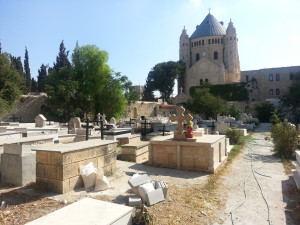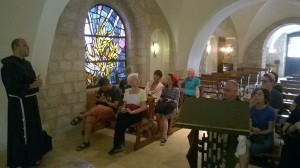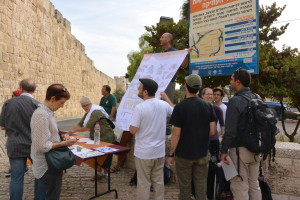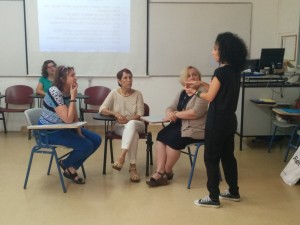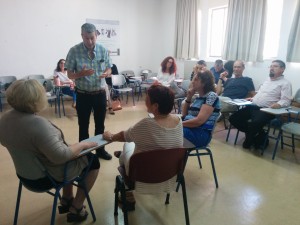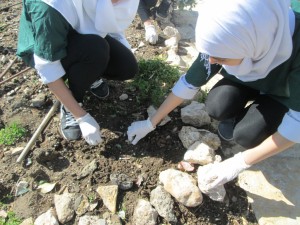Window to Mt. Zion – Serving as a Microcosm for all of Jerusalem
Our home on Mt. Zion is a fascinating place. Our neighbors include the Dormition Abbey, the Diaspora Yeshiva, Protestant, Catholic, Jewish and Muslim cemeteries. We have Oscar Schindler’s grave (in the Catholic cemetery), as well as the home of renowned Israeli sculptor, David Palombo, who created the gates to Israel’s Knesseth building. And of course, the most important site on Mount Zion stands in the middle of the complex and it is the only site in the world that is holy to Judaism, Christianity and Islam! For Jews and Muslims is it David’s Tomb. The Jewish King David who is also a prophet for the Muslims is believed to be buried in a cave under the building. For the Christians it is the Cenacle, better known as Jesus Last Supper Room. Holy for all three, but like the rest of the city – and even the region – much tension has arisen over the past thousand years around it. And also in the last few years regarding who visits what, and when, and to whom it all belongs. Seemingly a microcosm for all issues Jerusalem….
Tensions peaked in the fall of 2013 – the spring of 2014, as the newly-appointed Pope Francis sought to visit the Holy Land and was scheduled to visit David’s Tomb / the Room of the Last Supper. Jews protested, sometimes violently. We convened the residents of Mt. Zion, and amazingly were able to get everyone in one room, together with the police, to try and work out a solution. Thankfully, in the end the Pope’s visit was uneventful, but it uncovered a deeper problem Mt. Zion has been facing, and emphasized the need for action.
That is how the “Window to Mt. Zion” project came about. We partnered with the Search for Common Ground Jerusalem Office, which is also working on a registry for Holy Sites. This project seeks to raise awareness in the general public about Mt. Zion, hold regular tours of the chief sites and areas of Mt. Zion, noting any detail, any improvement or any physical attacks. As part of the project, a corps of 15 – 20 volunteers, in pairs, triplets and sometimes individually, tour the different sites around Mt. Zion, recording – and reporting when necessary – any interesting things they see. You can read their blog in Hebrew, here.
Last week, on Friday, 23 October, we had a kickoff event, as part of the Open House Jerusalem festival that took place throughout Jerusalem over the weekend. We set up a stand outside the Zion Gate of the Old City of Jerusalem, and offered a wide range of tours and lectures all over the Mount. We had tours of Mt. Zion from a Muslim perspective. We had tours of the recent archaeological excavations that are just outside the Old City walls. We had tours of the different cemeteries that populate the Mount. We told the fascinating story of our home and its famous mulberry tree. The Dormition Abbey and the Diaspora Yeshiva opened their doors to visitors as well. All in all, we told our story to 100 – 150 people throughout the day.

